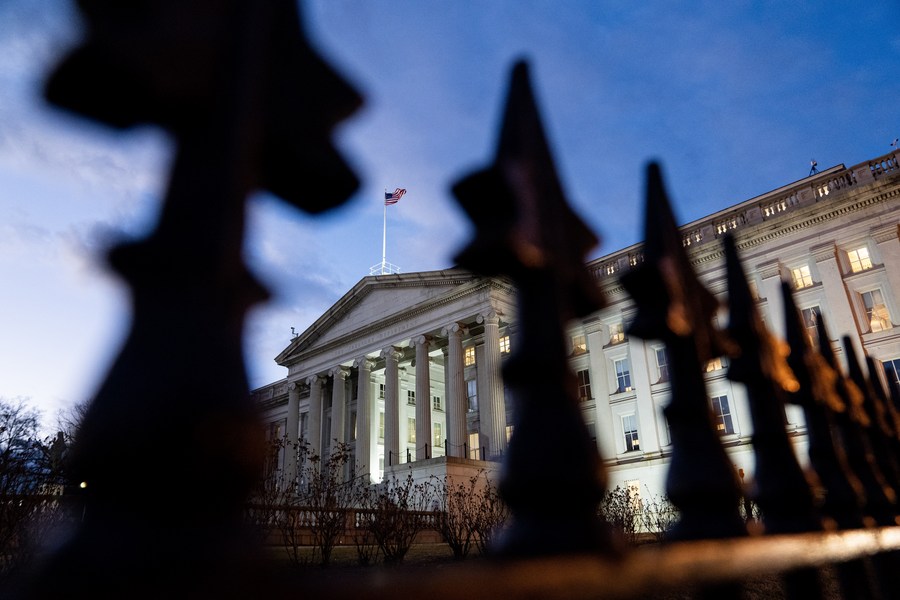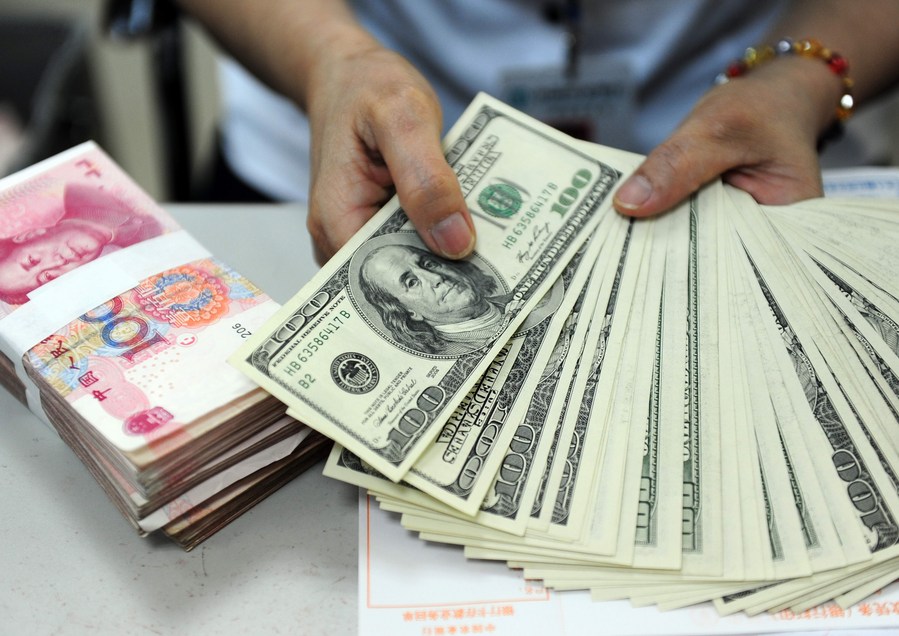Quiet Lingering of the U.S. Debt Crisis

Whether the debt ceiling problem can be solved appropriately is not only a matter for the U.S. economy because it will affect the recovery of the global economy.
On June 3, U.S. President Joe Biden signed a debt ceiling bill, the “Fiscal Responsibility Act of 2023,” two days before the nation’s debt default deadline, temporarily averting a calamitous default on its debt.
With the bill, the nation’s debt limit is officially suspended through January 1, 2025. This means that there is no hard cap on how much money the U.S. government can borrow to pay its debts during the suspension period. But the bill also required the federal government to cut its spending in 2024 and 2025. Specifically, the U.S. government will chop non-defense spending and Internal Revenue Service funding, add stricter work requirements to social welfare recipients, rescind unused COVID-19 funds, and end the pandemic pause on federal student loan payments, among other policies.
Although it temporarily averted a default crisis, the debt ceiling bill might pose risks for the future.
Escalating financial risk
The U.S. Department of the Treasury is expected to issue new bonds after the suspension of the debt ceiling. In the short term, this will lead to contracting market liquidity and in turn aggravate financial risk.
Due to debt ceiling restrictions, the Treasury’s cash balance had fallen to the lowest since 2017. The Treasury is expected to issue close to US$1 trillion in securities in the next four months to restore its cash balance to US$600 billion by September.
Alongside the extraordinary fiscal stimulus launched in response to the 2008 global financial crisis and the COVID-19 pandemic in 2020, the U.S. is expected to issue a historic high volume of Treasury securities. The implications on the economy will be equivalent to the Federal Reserve raising the target interest rate by 25 basis points.
Under the influence of Federal Reserve’s interest rate hikes, the collapse of the Silicon Valley Bank sent shocks through the entire U.S. banking sector, and liquidity in the financial market is tightening. The Treasury’s borrowing at this moment is likely to suck massive cash from banks, money market funds, and other creditors to the U.S. government, further squeezing the already tightening market liquidity.
Past experience has shown that the United States’ debt ceiling crisis is usually accompanied by tightening global liquidity and financial market volatility. Particularly in a time when the Federal Reserve is raising the interest rate and shrinking its balance sheet, the issuance of Treasury securities generates an adverse impact on U.S. dollar liquidity.

In the long term, it is unsustainable for the U.S. government to pay its debts with new borrowings. The country’s credit system and the U.S. dollar’s international position are facing huge challenges.
Since the global financial turmoil in 2008, the U.S. economy has been primarily relying on a model of debt monetization, a process through which the Treasury issues bills and the Federal Reserve purchases government debts. This leads to a skyrocketing fiscal deficit and alarming levels of governmental debt. The Federal Reserve’s interest rate increases further added to the government’s debt pressure.
The United States’ routine when adjusting the debt ceiling is that it first suspends the debt ceiling and automatically upgrades debts to the level on the new deadline. This does not effectively constrain debt expansion. It will bring back the U.S. debt ceiling fight in 2025 and continue to loom large over the global financial market and the global economy at large.
Adjusting the debt ceiling time and again, the U.S. is also overdrawing the credit of the U.S. dollar. This poses challenges to the U.S. credit system and international financial stability. The U.S. dollar has been dominating the global financial market. Through its trade deficit, the U.S. has been funneling the U.S. dollar worldwide. The U.S. dollar then returns to the United States in the form of government bond purchases. A self-reinforcing loop in favor of the United States has been formed in the process.
As U.S. government bonds are an important part of the foreign reserve and assets portfolio for many countries, the United States’ frequent raising of its debt ceiling will lead to volatilities in asset prices and foreign exchange rates. World countries will face risks of foreign reserve revaluation and asset losses, while re-pricing of global financial assets as a result of volatile yield rates of U.S. government bonds will test world countries’ financial markets.
Unsolved problem
The global economy is ridden with high inflation, high debt, high interest rates, and a low growth rate. Whether the debt ceiling problem can be solved appropriately is not only a matter for the U.S. economy because it will affect the recovery of the global economy.
This time, the suspension of the U.S. debt ceiling was accompanied by cuts in fiscal spending. This is constructive to tightening market liquidity. By chopping government spending, the United States is weakening its fiscal policy. The tightening of both monetary policy and fiscal policy further reinforced expectations for an economic recession.
But after the U.S. debt ceiling is suspended, the interest rate is expected to increase again. The Federal Reserve’s aggressive increases of interest rates will not only push up the financing cost for the real economy, suppress production and consumption, and generate adverse impacts on U.S. economy and employment, but also lead to capital outflow, currency depreciation, and high inflation in emerging markets or developing economies, which might trigger a global financial crisis and recession of the global economy.

The U.S. debt ceiling crisis will generate certain impacts on the Chinese economy.
China is the largest foreign holder of U.S. government debt. When the United States defers payment of interest or even default on its government debts, China’s foreign exchange reserve will shrink and its international purchasing power will weaken accordingly. Because the global economy faces high risk of recession and external demand is sluggish, China’s foreign trade is experiencing great uncertainty. A major hidden risk threatening China’s economic recovery is likely to be contracting exports.
In the financial market, U.S. default on its debts and the ensuing downgrading of its credit ratings will lead to depreciation of U.S. government bonds and pegged financial assets. If the U.S. government bonds were undersold or a run on the dollar happened worldwide, the U.S. dollar liquidity crisis would generate a spillover effect on China’s financial market.
It should be noted that the U.S. dollar is not impregnable as an international currency. The U.S. debt ceiling problem has accelerated the diversification of the international currency system and the process of de-dollarization, creating opportunities and conditions for the Chinese yuan to emerge as an international currency.
The global economy is clearly trending towards de-dollarization for reasons of financial security and trade facilitation. Countries around the world are exploring using currencies other than the U.S. dollars to settle international trade and pulling back from dollar-denominated assets including U.S. government bonds.
The U.S. debt crisis may have been tackled for now, but its implications for the global economy linger.
Cao Jing is an associate research fellow at the Institute of Finance & Banking of the Chinese Academy of Social Sciences.
 Facebook
Facebook
 Twitter
Twitter
 Linkedin
Linkedin
 Google +
Google +










